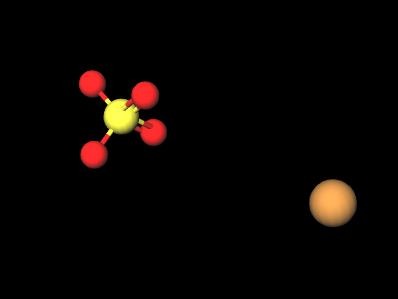Copper sulfate is a chemical compound used for its antifungal and antibacterial properties, making it useful in various products.
Chemical Industrial Synthesis Process
- Raw copper. Copper is obtained from copper ores or scrap metals, which are purified and prepared for copper sulfate production.
- Reaction with sulfuric acid. The raw copper is dissolved in concentrated sulfuric acid, generating copper sulfate and releasing hydrogen as a byproduct.
- Crystallization. The copper sulfate solution is concentrated through evaporation to form copper sulfate pentahydrate crystals (CuSO₄·5H₂O).
- Filtration and washing. The formed crystals are filtered out from the remaining solution and washed to remove residual impurities.
- Drying. The copper sulfate crystals are dried to remove excess moisture and produce a stable product.
- Quality control. The crystals are tested to ensure they meet quality standards in terms of purity and compliance with industry requirements.
What it is used for and where
Copper sulfate is an ingredient used in cosmetic formulations for its antibacterial and antifungal properties. It is particularly effective in promoting wound healing and combating bacteria on the skin. It is often used in scalp care products and topical treatments, where it helps prevent infections and irritation, promoting healthy skin.
Cosmetics - INCI Functions
- Skin conditioning agent. It is the mainstay of topical skin treatment as it has the function of restoring, increasing or improving skin tolerance to external factors, including melanocyte tolerance. The most important function of the conditioning agent is to prevent skin dehydration, but the subject is rather complex and involves emollients and humectants that can be added in the formulation.
Cosmetic Applications
Antimicrobial Properties. Copper sulfate is effective in combating bacteria and fungi, helping to keep the skin clean and prevent infections (1).
Skin Regeneration Stimulation. It supports collagen and elastin production, aiding in skin regeneration and improving elasticity.
Hair Care. Sometimes used in hair care products (2) for its ability to remove impurities and promote hair growth.
Soothing Effects. It reduces irritation and skin inflammation, making it useful in creams and lotions for problematic skin.
Other Applications
Agriculture. Used as a fungicide and pesticide to protect crops from mold and pests.
Water Treatment. Employed to eliminate algae and other unwanted organisms in water treatment systems.
Electroplating. Used in electroplating processes to deposit a layer of copper on various metals.
Textile Industry. Employed as a mordant to fix colors in textile fibers.
Molecular Formula CuSO4
Molecular Weight 159.61 g/mol
CAS 7758-98-7
UNII KUW2Q3U1VV
EC Number 231-847-6
DTXSID6034479
Synonyms:
Cupric Sulfate
Blue Vitriol
Bibliografia_____________________________________________________________________
(1) Benhalima L, Amri S, Bensouilah M, Ouzrout R. Antibacterial effect of copper sulfate against multi-drug resistant nosocomial pathogens isolated from clinical samples. Pak J Med Sci. 2019 Sep-Oct;35(5):1322-1328. doi: 10.12669/pjms.35.5.336.
Abstract. Background and objective: With the emergence of antibiotic resistance and the hospital acquired infection, the interest for antimicrobial agents has recently increased again in public health. Copper is recommended as a supplementary method of increasing biological safety in the hospital environment. The objective of this study was to determine the antibacterial activity of copper sulfate salts on strains of bacterial pathogens isolated from different clinical pictures in different health establishment in Algeria....Conclusion: Copper sulfate salts has significant antibacterial activity against multi-drug resistant nosocomial pathogens.
(2) Borowczyk K, Suliburska J, Jakubowski H. Demethylation of methionine and keratin damage in human hair. Amino Acids. 2018 May;50(5):537-546. doi: 10.1007/s00726-018-2545-3.
Abstract. Growing human head hair contains a history of keratin and provides a unique model for studies of protein damage. Here, we examined mechanism of homocysteine (Hcy) accumulation and keratin damage in human hair. We found that the content of Hcy-keratin increased along the hair fiber, with levels 5-10-fold higher levels in older sections at the hair's tip than in younger sections at hair's base. The accumulation of Hcy led to a complete loss of keratin solubility in sodium dodecyl sulfate. The increase in Hcy-keratin was accompanied by a decrease in methionine-keratin. Levels of Hcy-keratin were correlated with hair copper and iron in older hair. These relationships were recapitulated in model experiments in vitro, in which Hcy generation from Met exhibited a similar dependence on copper or iron. Taken together, these findings suggest that Hcy-keratin accumulation is due to copper/iron-catalyzed demethylation of methionine residues and contributes to keratin damage in human hair.
![]() Copper sulfate
Copper sulfate 



